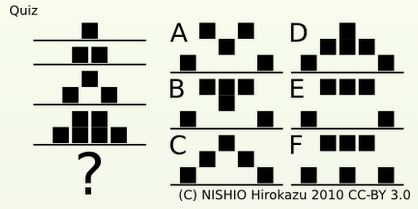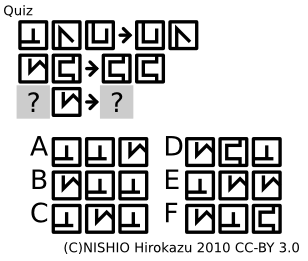Hi, it is
Dr. NISHIO Hirokazu. This is an answer for
Haskell Quiz. Please read it in advance.
Why some program show strange behavior? To answer the question, I should define what is "strange". For example the following behavior is strange.
// JS
var a = ***, b = ***, c = ***;
console.log(a < b); // true
console.log(b < c); // true
console.log(c < a); // true
In the case, "strange" means "different from mathematical behavior". Now the answer is clear, it is because those are not purely mathematical objects.
var a = "9", b = 10, c = "100";
console.log(a < b); // true
console.log(b < c); // true
console.log(c < a); // true
Haskell also shares some common "strangeness" with other languages.
Prelude> let x = *****
Prelude> x == x + 1
True
You may know the quiz in the other language. This "strangeness" come from the limited resolution of floating point number.
Prelude> let x = 2 ** 64
Prelude> x == x + 1
True
Now, return to the problem I posted.
In Haskell, you can overload different value on one name.
You may disagree. You may see "Multiple declarations of something" error.
But wait. Didn't you have ever defined 'show'? Isn't it overloaded?
Haskell is very different from C++/Java. In C++/Java, you can overload functions whose type of arguments are different. In Haskell, you can also overload functions whose type of
return value are different. It is very important.
The quiz's tricks are,
- You can overload in Haskell
- You can overload functions whose return value are different
- and there are no need to take argument
- (+) and (==) are t -> t -> t, so it can be used to restrict arguments' type. x + (1::Int) says x is (x::Int).
- Number Literal (e.g. 0) are (Num a) => a, so it can be used as both (0::Int) and (0::Integer).
Now let me show my answer.
class Foo t where
a :: t
b :: t
instance Foo Int where
a = 0
b = 1
instance Foo Integer where
a = 1
b = 0
c :: Int
c = 0
d :: Integer
d = 0
main = do
print $ a + c == 0 -- True.
print $ a == c -- True. a::Int == c::Int == 0.
print $ c == 0 -- True.
print $ a + d == 1 -- True.
-- d is Integer. So the variable a is a::Integer,
-- which equals 1. "d == 1" is a misconception.
print $ b + c == 1 -- True. b::Int is 1.
print $ b + d == 0 -- True. However, b::Integer is 0.
print $ b == d -- True. Yes, both are 0::Integer;
print $ d == 0 -- True.
-- Why I use "d == 0" not "b == 0"?
-- Because it causes "ambiguous type" error.
-- You know, ":t 0" is "(Num t) => t". No way to determine
-- it is Int or Integer.
-- hints to make answer unique (perhaps...)
print $ sum([a, b, c]) -- 1: It is [0, 1, 0]::[Int]
print $ sum([a, b, d]) -- 1: It is [1, 0, 0]::[Integer]
print $ [a, b, c] !! a -- 0: (!!) take Int argument,
print $ [a, b, c] !! b -- 1: so it says (a::Int /= b::Int)
print $ [a, b, c] !! c -- 0
-- Why I didn't show [a, b, c] !! d is,
-- it causes error because d is Integer.








